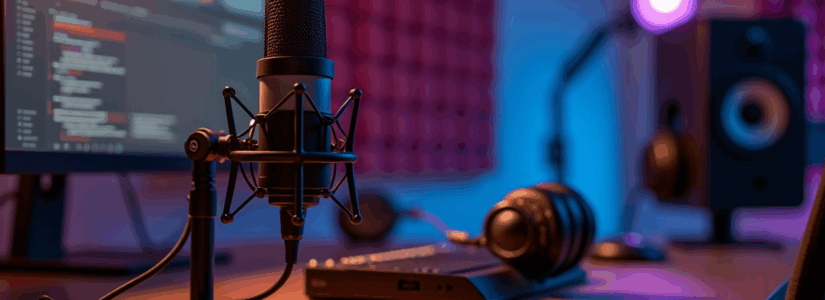🎙 WAV vs MP3 for Podcasts – The Truth Behind the Upload Drama
So you’re uploading your podcast and suddenly it feels like you’ve hit a brick wall. Maybe your platform’s throwing errors, maybe the upload takes longer than your last existential crisis. Nine times out of ten, the problem isn’t the platform — it’s that you’re trying to upload a chunky, full-fat WAV file.
Let’s clear the air: WAVs aren’t the villain, but they aren’t your podcast’s best friend either — especially once it hits Spotify, Apple Podcasts, or wherever your show lives.
🥊 WAV vs MP3: The Punch-Up
WAV
- 🎛 Uncompressed, lossless audio
- 🧱 Huge file sizes (600MB+ for 1 hour)
- 🎙 Great for editing and mastering
- 🚫 Not practical for distribution
MP3
- 📦 Compressed, lossy format (but smartly so)
- 💾 Tiny file sizes (~50–100MB for 1 hour)
- 🚀 Perfect for upload and streaming
- 👂 Virtually no audible difference when exported properly
🎧 But I Want the Best Quality, Bro
You should start with WAV files when recording and editing — that’s your raw, high-res material. But once it’s done, your goal isn’t to upload an audiophile’s dream — it’s to make it streamable.
Here’s the kicker:
Platforms like Spotify compress everything anyway.
Whether you upload a pristine WAV or a clean 320kbps MP3, it gets transcoded into 128–192kbps AAC, optimized for streaming.
You won’t win the audio quality battle uploading WAVs — you’ll just make the war harder on yourself (and your bandwidth).
💬 “But I Can Hear the Difference…”
No, you can’t.
Not after compression, platform processing, and whatever $29 Bluetooth speaker your audience is listening on.
Even if you think you can, the reality is:
- A properly exported 320kbps MP3 sounds nearly identical to a WAV file once it’s streamed.
- The bottleneck isn’t your export — it’s the platform and your guest’s mic quality.
🎙 Remote Guests Make It Worse
If your guest is remote and recorded through a web call (Zoom, Skype, etc.), you’re already starting behind the quality line:
- Web calls are heavily compressed
- Noise reduction and echo filters mess with audio fidelity
- You’re capturing low-quality sound — even if you save it in WAV
To level up your sound, try a double-ender setup: each speaker records locally, then you merge them in post. That’s when WAV makes sense. Otherwise? Waste of upload space.
✅ TL;DR: What You Should Be Doing
- ✅ Record/edit in WAV
- ✅ Export final mix to 320kbps MP3
- ✅ Upload that MP3
- ✅ Let Spotify do its compression thing
- ✅ Sleep easy knowing nobody can tell the difference
🎧 Want to Hear It Done Right?
Looking for a podcast in the adult industry that nails the sound and the substance?
Check out Adult Site Broker Talk — hosted by industry veteran Bruce Friedman, this podcast features interviews with the movers, shakers, and mischief-makers behind the adult biz.
Insightful, consistent, and a great example of how to do remote podcasting right (even if Bruce sometimes forgets to switch to MP3 😅).
🎙 Visit Adult Site Broker Talk



No Comments